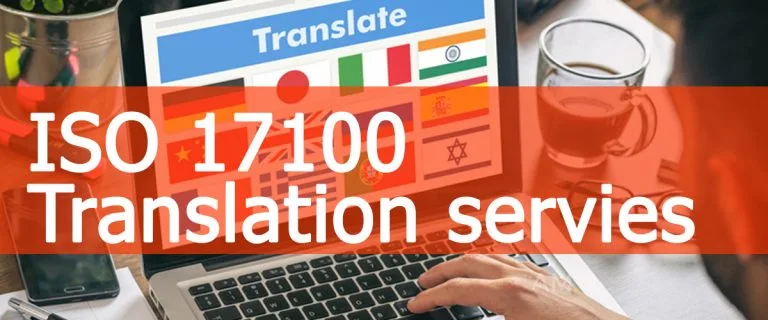With a growing number of data leaks making headlines, maintaining confidentiality in legal translation has become critically important. Legal professionals rely on accurate and secure translations for sensitive documents such as contracts, litigation files and intellectual property.
However, confidentiality in translation goes beyond simply keeping information private. It requires comprehensive data protection measures throughout the entire workflow. This blog post outlines the most effective ways to safeguard legal translations.
The Role of Confidentiality in Legal Translation
Legal documents often contain sensitive information. If exposed, the consequences can extend beyond financial damage to include reputational harm and legal liability. Even a small translation error can cause serious misunderstandings.
For example, leaking details of a high-profile lawsuit could erode client trust, trigger counter-litigation or damage a firm’s reputation. As such, translation service providers must ensure that both the process and the documents themselves are thoroughly protected.
Legal Consequences of Breaching Confidentiality
Errors in legal translation can lead to disputes, contract breaches or lawsuits. For instance, mistranslating a contract termination clause could entirely alter the parties’ legal obligations.
In addition to financial losses, companies may face hefty penalties under data protection laws. Under the EU’s General Data Protection Regulation (GDPR), fines can reach up to 4% of global annual turnover. In the United States, violations of the Health Insurance Portability and Accountability Act (HIPAA) can incur fines of up to $50,000 per incident.
These risks underscore the need for legal translators who not only ensure linguistic accuracy but also adhere strictly to confidentiality protocols.
Security Measures in Legal Document Translation
Advanced End-to-End Encryption:
Encryption is a critical component in protecting legal documents. However, many translation providers still rely on basic encryption methods. To ensure the utmost safety for highly sensitive legal translations, cutting-edge encryption technologies, such as quantum cryptography, are increasingly important. Unlike conventional encryption, quantum encryption is based on the principles of quantum mechanics, making it virtually impossible to decode without the proper decryption key.
Applying advanced encryption methods to translated documents helps secure content during transmission via email or cloud-based storage systems. Even in the event of a data breach, hackers would be unable to access the information without the correct key.
Zero Trust Architecture
While many organizations still rely on traditional security measures like firewalls, the “Zero Trust” security architecture adopts a more proactive stance by assuming that no user or system, internal or external, can be inherently trusted.
When this principle is applied to the legal translation workflow, only individuals with clearly verified identities and explicitly granted permissions are allowed to access sensitive documents. This approach significantly reduces the risk of internal data leaks or unauthorized access during the translation process.
Blockchain
Blockchain technology, originally known for its role in cryptocurrencies, has now proven its value in securing legal translations. When applied to translation workflows, blockchain creates an immutable ledger that records the entire handling process of a document, from the initial translation to subsequent revisions, making it possible to detect any unauthorized changes.
Beyond securing the translation process, blockchain also offers full transparency, allowing for precise tracking of who accessed or modified the document and when.
Compliance with International Standards
ISO 9001: Quality Management
ISO 9001 establishes a Quality Management System (QMS) to ensure that translations meet standards of accuracy, timeliness and confidentiality. This certification also supports compliance with regulations such as GDPR and HIPAA by enforcing a clear, controlled workflow.
For agencies specializing in legal translation, achieving ISO 9001 certification demonstrates strict adherence to both security and legal standards, significantly reducing the risk of errors or data breaches.
ISO 17100: Translation Services
ISO 17100 governs the entire translation process, from translator qualifications and project management to quality assurance. This standard ensures translation accuracy while also mandating strict security measures such as encryption, secure storage and access control.
For sensitive documents like contracts or litigation materials, ISO 17100 helps safeguard data and prevent legal violations across multiple jurisdictions.
ISO 18587: Post-Editing of Machine Translation Output
As machine translation becomes increasingly widespread, ISO 18587 ensures that machine-assisted translations meet the same standards of quality and confidentiality as human-only translations.
This certification mandates that the post-editing process be performed by human editors within a secure environment, minimizing the risk of data leakage through cloud-based platforms.
Securing Digital and Physical Infrastructure
Physical Security:
Translation offices must implement measures such as biometric authentication, secure filing cabinets or safes and surveillance camera systems.
Compliant Data Storage:
Where data is stored is crucial, as many countries have regulations requiring that data be hosted in jurisdictions with appropriate data protection laws. As such, legal translation providers must comply with data sovereignty regulations to ensure secure, legally sound storage and reduce risk.
Emerging Security Trends in Legal Translation
Artificial Intelligence (AI) is becoming increasingly common in translation workflows, but without careful oversight, it can introduce serious security risks. Translation providers must anonymize or encrypt data before processing it with AI and avoid storing sensitive information on public cloud platforms.
Conclusion
The risks posed by data breaches in legal translation are extremely serious. To safeguard sensitive documents, businesses must implement a combination of advanced technologies such as encryption, blockchain, zero trust architecture and physical security controls. Most importantly, they should choose a professional translation provider with international certifications to ensure that every aspect, from accuracy to data protection, is rigorously controlled.






